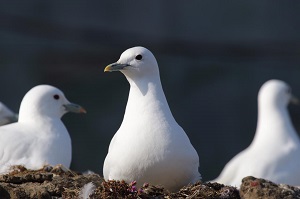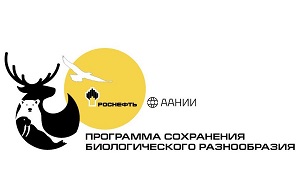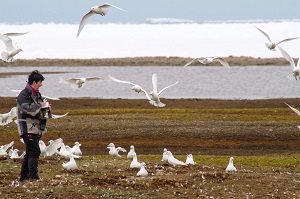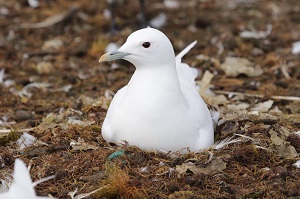Rosneft Commences Study of Red-Listed Ivory Gull in the Arctic

The Arctic Research Centre, a part of the Rosneft Oil Company Corporate Research Complex, and the Arctic and Antarctic Research Institute have commenced a comprehensive study of the ivory gull, included in the Red List of Threatened Species.
The expedition started in the north-eastern part of the Kara Sea at the end of June and will continue its work during the entire bird nesting period of about two months.
 Wiese Island is the main research and stationary observation site. Scientists will also conduct research in the Severnaya Zemlya Reserve, on the Sedov and Severnaya Zemlya archipelagos and islands of the Great Arctic Reserve. The expedition will conduct aerial surveys and a survey of potential nesting sites. Bird observations will be performed from the air along the entire route of the expedition--over the seas, in the coastal zone of the mainland and on the islands.
Wiese Island is the main research and stationary observation site. Scientists will also conduct research in the Severnaya Zemlya Reserve, on the Sedov and Severnaya Zemlya archipelagos and islands of the Great Arctic Reserve. The expedition will conduct aerial surveys and a survey of potential nesting sites. Bird observations will be performed from the air along the entire route of the expedition--over the seas, in the coastal zone of the mainland and on the islands.  Advanced equipment is to be used to obtain the most accurate information on the number and specifics of the ivory gull spatial location. For this purpose, scientists will use unmanned aerial vehicles, precision digital photography, photo- and video recorders and GPS trackers to track the movements and seasonal activity of birds. The monitoring of ivory gulls’ movements will help to identify their foraging habitats during the nesting period and to estimate the radius of foraging flights.
Advanced equipment is to be used to obtain the most accurate information on the number and specifics of the ivory gull spatial location. For this purpose, scientists will use unmanned aerial vehicles, precision digital photography, photo- and video recorders and GPS trackers to track the movements and seasonal activity of birds. The monitoring of ivory gulls’ movements will help to identify their foraging habitats during the nesting period and to estimate the radius of foraging flights.
At present, there is no systematic monitoring of ivory gull number and reproduction capability, nor information on their feeding habitats during the breeding period. The Rosneft expedition is designed to fill the gap in scientific knowledge about the ivory gull in the Russian part of the range, which will contribute to the conservation of this rare species.
 In early 2020, Rosneft and the Ministry of Natural Resources and Environment of the Russian Federation signed the Cooperation Agreement within the framework of the national project Ecology. Rosneft intends to implement a corporate programme to study, preserve and monitor key species, the bioindicators of Arctic ecosystem resilience, one of which is the ivory gull, a rare seabird species listed in the Red Book of Russia.
In early 2020, Rosneft and the Ministry of Natural Resources and Environment of the Russian Federation signed the Cooperation Agreement within the framework of the national project Ecology. Rosneft intends to implement a corporate programme to study, preserve and monitor key species, the bioindicators of Arctic ecosystem resilience, one of which is the ivory gull, a rare seabird species listed in the Red Book of Russia.
In the course of the Company’s production activities, Rosneft pays close attention to environmental protection and preservation of biological diversity in its area of responsibility. Protection of the environment is an integral part of the Company’s corporate culture.
Note for Editors:
Since 2014, Rosneft has been implementing a number of programmes and projects aimed to preserve biological diversity in the regions of its operation: the Evenki Deer and Evenki Geese projects in Krasnoyarsk Territory, the Siberian Sable project, programmes for study and preservation of polar bears, walruses and Siberian tigers. In 2018, the Company initiated a comprehensive research project to study the Black Sea dolphins.
The environmental activities of Rosneft Oil Company take on an interdisciplinary approach and comprehensive research by representatives of various branches of science—oceanology, geology, marine biology—as well as study the animal species being indicators of the state of the ecosystem.
Ivory gull is a rare and protected bird species. Since 1984, ivory gull has been included in the Red Book of Russia and regional Red Lists of polar subjects of the Russian Federation. Remoteness and inaccessibility of ivory gull habitat and nesting areas and uneven distribution through the habitat area cause fragmentation of information on their population size and its dynamics, territorial linkages and population structure.
Rosneft
Information
Division
July 2, 2020